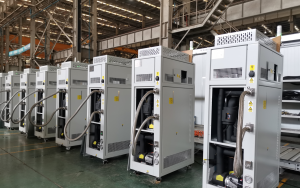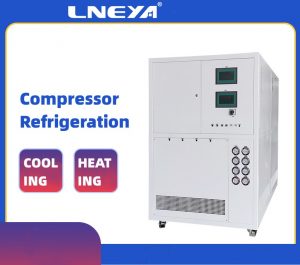Types of Environmental Tests
The environmental chamber is one of the many types of experiments used in scientific research, product development, production and evaluation. The fundamental difference between environmental tests and other tests is that there are specific requirements for the environmental conditions of the tests. Its purpose is to obtain the product material, the change of the structure, function, performance, information of products’ physical response characteristics to the environmental stress and ultimate ability to the environment in specific environmental conditions, simulating the environment, so as to provide a basis for various decisions or take appropriate measures. Therefore, environmental testing is generally not carried out in the familiar living and working environment, that is, under the so-called normal temperature, pressure and often encountered humidity conditions. More scientifically, says it is in the environmental testing standards specified in the standard atmospheric conditions (usually for 15 ~ 35 ℃, 50 ~ 80% RH, 104 ~ 106 kPa) outside under the condition of the experiment, namely environmental chamber.
Types of environmental tests
It is generally believed that environmental test can be used as a means to check the stability of the batch production process and determine whether the product can be accepted before leaving the factory, that is, environmental acceptance test and environmental routine test, which are the means to check the quality of the batch production. In fact, the purpose of environmental testing goes far beyond this range, which is not only the assessment of conformity of the product adaptability to the environment requirements and evaluation means of product environment adaptability, but also a tool to find the environmental adaptability design flaws, improve product design information and a tool that access to products of all kinds of information, so as to get a better use of the product. Thus, it is also a kind of test that makes the products value-added. Because of this, more and more attention has been paid to environmental tests at home and abroad. According to MIL-STD-810F environmental engineering considerations and laboratory test methods and GJB4239 general requirements for equipment environmental engineering, environmental tests can be divided into three categories, namely, natural environmental tests, laboratory environmental tests and operational environmental tests.
Recomendações relacionadas
-
Pequeno golpe para lidar com o bloqueio de gelo em refrigeradores de circulação de líquido de alta e baixa temperatura
810No funcionamento de refrigeradores de circulação de líquidos de alta e baixa temperatura, o bloqueio de gelo é uma falha relativamente comum. Com base na experiência dos fabricantes relevantes, compilámos especialmente dicas relevantes para lidar com os bloqueios de gelo. Na tubagem...
Ver pormenores -
What is the refrigeration principle of the glycol chiller system
1231Glycol Chiller System , as we can tell fromits name, it is to use Glycol as the refrigeration agent for the chiller. In the all air environment, because of thelow temperature in the outdoors, it is impossible to use a cooling tower tosupply t...
Ver pormenores -
Método de controlo da paragem do refrigerador arrefecido a água de uma única caldeira de reação
1276The reaction kettle water cooled chiller has a wide range of accessories and equipment. In actual use, it needs to be provided with regular rest time. In order to maintain the stable performance of the refrigerator during long-term operation, it i...
Ver pormenores -
Vantagens das bombas de circulação de baixa temperatura para laboratório
829O circulador de baixa temperatura para laboratório pode fornecer simultaneamente temperatura constante e equipamento de refrigeração, aquecimento e controlo de temperatura. O circulador de baixa temperatura para laboratório tem uma estrutura razoável, um funcionamento simples e...
Ver pormenores
 LNEYA Refrigeradores industriais Fabricante Fornecedor
LNEYA Refrigeradores industriais Fabricante Fornecedor













